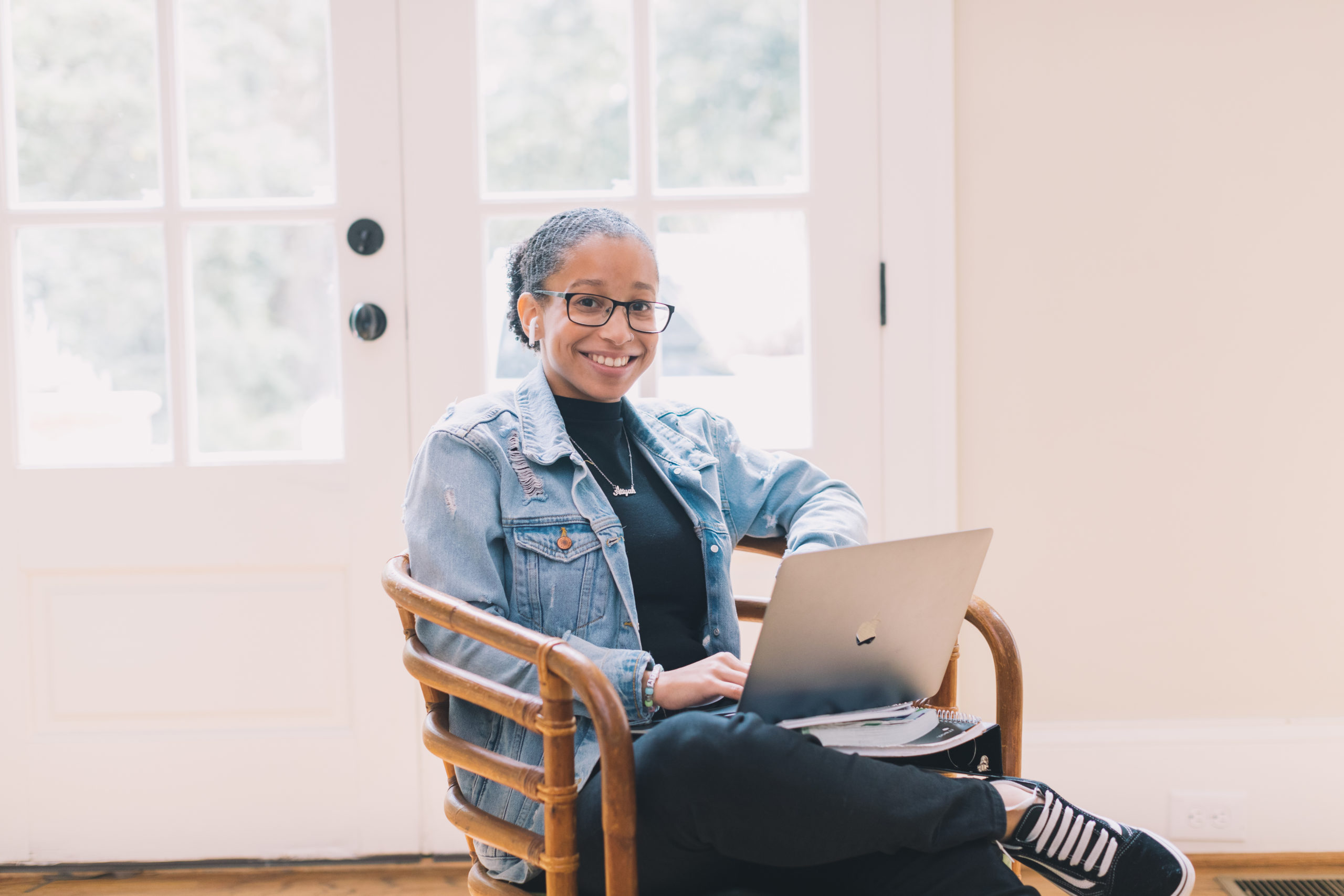In early summer 2020, the team at Every Learner Everywhere participated in a leadership and team development program from The National Equity Project, along with peers from K-12 and higher-ed institutions across the country. Over two days of presentations, discussions, and breakout sessions, the Every Learner leadership considered how they could set courageous goals in their work with colleges and universities.

Robert Perez
One of the team is Robert Perez, Manager of Network Development and Strategic Partnerships. His role is to build relationships with the network of partner organizations and with other organizations that may participate in the network’s initiatives.
All of Every Learner’s initiatives have a primary goal of using digital learning technologies to close equity gaps in higher ed. The mission is premised on that possibility.
But Every Learner and its network partners can’t assume equity naturally follows from digital learning. In fact, as Perez discusses here, without consistent attention, digital learning can end up reproducing existing equity gaps.
In the following conversation, edited and condensed for readability, Perez shares what emerged from the National Equity Project training and the renewed sense of purpose he and his colleagues derived from it.
How did the Equity Project training come up?
Equity is a component of our mission, but there was always a question of how to actualize that in the work that we do. Bringing Jessica Rowland Williams on board as the director last year, we were able to accelerate our efforts as a team.
While we are grateful for the enthusiasm for equity work that each of our 12 partners bring to the network, it can be challenging when this manifests as multiple understandings of what that work means in practice. It’s up to us to sustain that enthusiasm and develop an equity expertise within our team that can help focus the network’s equity vision and increase its impact.
Was there also an interest in improving how the internal team works together?
The training does help us bring our respective views on equity into greater alignment. The structured training illuminated our thinking about our own experiences and what we think about the work we’re doing now.
Ideally, we would like to continue developing a critical eye when it comes to equity so that whenever a network partner surfaces a potential project we can quickly answer the question, “What’s the straight line between this work and its concrete equity impact on campus?”
When there is, we want to broadcast to the world how digital learning can be used to close gaps in achievement on racial and socioeconomic lines.
Does that straight line between digital learning initiatives and equity usually exist in practice?
Our assumption is there’s not. We all have it as an intention, but we’re not really seeing it. It doesn’t seem very concrete when we look at a lot of specific initiatives.
So we want to be able to ask about pilot projects, “How can we do it next time to bring out the equity intention that was there at the beginning? And if it’s still in process, how can we re-center equity?”
Going forward, we want to make sure that it’s top of mind and that we’re only pursuing lines of work that have equity at the core.
Like I said, everybody is committed and is enthusiastic about it. Our most pressing challenge is making sure our equity perspective and expertise is robust enough to make sure our work is designed for impact. Looking ahead, though, I expect the challenge will be capacity as the network’s activity multiplies.
Can you give an example of re-centering equity?
A lot of our services were developed with faculty in mind as the consumer, providing them with professional development or tools to improve their pedagogical practice when it comes to digital learning. That’s great, obviously, because if a faculty member isn’t performing well, that has huge ramifications for the student.
But the other half of that equation is the student. We don’t really have enough when to offer students — or, if talking to faculty, ways to highlight what the student is or isn’t bringing to the digital learning experience.
Equity training, improving our equity expertise, is a way for us to better understand what those equity challenges are for students. That’s information we could share with faculty to inform their practice so that they’re always responsive to student needs.
Can you discuss how the shift to digital learning can reproduce equity gaps?
If you scratch at the surface, you start to see assumptions that were taken as a given but that were not either fair or racially sensitive.
For example, technology for the most part is concentrated in relatively few hands. It tends not to have any direct connection to black or Latino communities, even though they are just as much consumers of that technology as everybody else. Those communities tend not to be as savvy about privacy implications, data access, and usage. They may not feel like a tool was empowering for them, while somebody who has more experience and resources will feel confident.
We could play a role in making sure students end up feeling like they are being served by digital learning more broadly— that this isn’t just a way for a college to cut costs, that there is a way to engage in it, to leverage it.
Digital learning needs to feel that it’s just as much an avenue to success as the traditional classroom approach.
How about ways in which curricula carry inequities in them?
This is not a new problem, but there are questions of whether the curriculum is culturally sensitive. These are questions that have plagued standardized assessment and textbooks for years.
We’re realizing when you look at the lineage of what you’re taking over, you don’t have to go back very far to see that it was designed to privilege certain races and socioeconomic groups. The syllabi, the course policies, the teaching methods, and the reading lists are often descended from models that worked well for a limited set of students in the past but not necessarily for all students today.
There was never time or energy to weed that out. It just gets ported over again and again, and now it’s being ported over to an online platform. That doesn’t solve any of the concerns about how it was developed, who developed it, what assumptions were made.
A lot of times, the feeling is, well, if it’s just put online, all of a sudden that changes it qualitatively. In practice, it doesn’t.
How has the COVID-19 crisis exposed this potential downside?
A classic example is the traditional approach to classroom attendance, which has an unequal impact on students. If you’re from a lower socioeconomic background, if you’re working, if you’re caring for children or other dependents, there are more compounding pressures, all that stuff going on in the background.
When you transfer a class online, the thinking is that working from home should automatically solve a problem. But COVID-19 is an ad hoc experiment showing that those same communities struggling to meet the demands of the traditional classroom experience before are now saying, “I’m at home, but I’m still at home with my family or an extended family. I still have the same demands.”
All the pressures still exist. In some cases they’re more heightened. Assumptions are made about broadband internet access. Students are thinking, “I used the public library for that before. But now if the public library is closed, that takes away the link to my education.”
Computer labs are closed, so we’re seeing that for some students, their mobile device is the only computer available to them. Or they share a laptop with a household, so it’s not something that’s personal and always accessible.
Another example is the etiquette about turning on your webcam — about faculty members saying, “Everybody has to turn on their webcam.” If you’re living in a house with several other people, the closet or the bathroom may be the only place you can find the peace and quiet you need to engage in class in a meaningful way. That may not necessarily be something you feel good about broadcasting to everybody else that happens to be online at the time.
How can Every Learner Everywhere and its partners work toward the opposite result — to promote digital learning that closes equity gaps?
Clearly, the traditional on-campus experience hasn’t necessarily served all students well. Very few places can raise their hand and say that they have a good handle on serving students of color and low-income students. This is an opportunity to get it right.
We want college campuses to know that when you’re dealing with our network, this is going to be part and parcel of the services you’re receiving from us. They’re going to be designed with equity in mind and with the ultimate goal of having an equity impact at your institution.
We know there are a lot of schools that, when it comes to digital learning, have a lot of work to do and are eager to do that work. This isn’t just about adding more technology or bringing on a gadget. Digital learning can be a meaningful way to drive change when it comes to student outcomes.
And it’s happening.
Yes. You don’t have to look far for the risks I mentioned earlier, but you don’t have to look far for some great progress either.
Students are becoming more vocal about saying, “Just because this class went online, that didn’t necessarily solve anything when it came to the challenges that we’re facing with getting an education.”
One hopeful sign comes out of two surveys recently conducted by Tyton Partners and Digital Promise regarding the impact of the COVID-19 pandemic on faculty and on students. Both groups’ satisfaction with online learning was directly correlated with the use of previously validated pedagogical practices. The more of these practices that were used, the greater the overall level of satisfaction. This tells us there is a relatively direct route to increasing learning outcomes available to instructors. For students, understanding the potential of this type of teaching to improve their satisfaction and learning may empower them to advocate for it.
Isn’t one of the biggest barriers to change that the time to do it right is greater than the time available?
That’s very true, especially with the academic calendar being what it is. Everybody’s aware of the very limited windows of time you have to stand something up, train people, familiarize them with it before you’re in the thick of it, and students are learning. You can’t make changes in the middle of a semester, so that leaves little chunks of time during winter and summer breaks.
There were tremendous challenges before everything that’s happened in the first half of this year. So we’re sympathetic to the fact that it’s a big ask we’re making.
But I think that there couldn’t be a better time for what we’re doing. We’re being given a new opportunity to really improve on the failures of the more traditional approach.
Digital learning is that new opportunity, that fresh ground. If you wanted the chance to stand up a new model of teaching and a new model of learning for students that didn’t have all that, this is the time to do it.
Robert McGuire is the owner of McGuire Editorial, a content marketing agency specializing in higher education and education technology.


